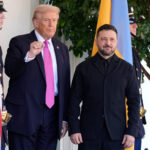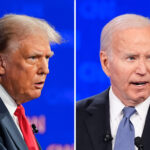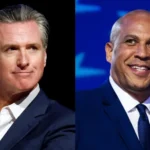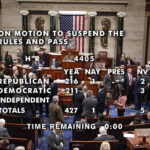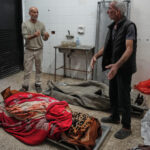European Leaders Join Zelenskyy for Critical Trump Talks/ Newslooks/ WASHINGTON/ J. Mansour/ Morning Edition/ Ukrainian President Volodymyr Zelenskyy brought top European leaders to Washington to confront President Trump with a united front against Russian aggression. This follows Trump’s private summit with Putin, raising fears among NATO allies. The high-stakes White House meeting may reshape Ukraine’s future and global security.
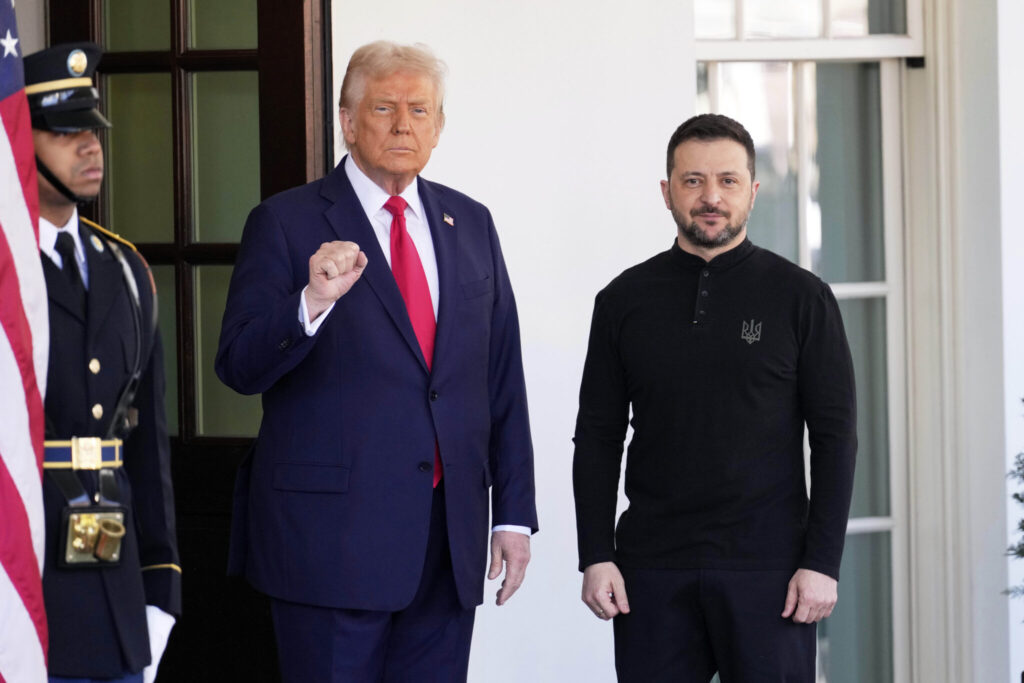
Ukraine Peace Summit Quick Looks
- Zelenskyy and European leaders met Trump at the White House.
- The summit followed a controversial Trump-Putin meeting in Alaska.
- Top EU leaders aimed to prevent Ukrainian territorial concessions.
- Putin pushed global allies ahead of Zelenskyy’s U.S. arrival.
- Trump floated potential peace tied to Ukraine ceding Donbas and Crimea.
- European Council to hold emergency video summit Tuesday.
- Russian missile strikes hit Kharkiv, Odesa, and Sumy during summit prep.
- Trump reignites fight against mail-in voting during Ukraine talks.
Deep Look: Europe Rallies at White House in Bid to Protect Ukraine
WASHINGTON — August 18, 2025
In a display of rare international unity, Ukrainian President Volodymyr Zelenskyy arrived at the White House on Monday flanked by Europe’s most powerful leaders. Their goal: to confront President Donald Trump with a unified stance against Russian aggression and ensure that Ukraine doesn’t lose ground—literally or diplomatically—in ongoing peace efforts.
This urgent meeting followed Trump’s solo summit with Russian President Vladimir Putin in Alaska last Friday, where European allies were notably excluded. That omission triggered alarm across Europe, prompting Zelenskyy to organize what has become a strategic countershow of allied resolve.
Among the political heavyweights present: NATO Secretary-General Mark Rutte, European Commission President Ursula von der Leyen, British Prime Minister Keir Starmer, French President Emmanuel Macron, German Chancellor Friedrich Merz, Italian Premier Giorgia Meloni, and Finnish President Alexander Stubb. Zelenskyy said the bloc “coordinated their positions” before the Trump meeting, united around one goal: “a reliable and lasting peace” for Ukraine and all of Europe.
Flags, Cameras, and Pressure
A sea of media crews and security officials lined the West Wing as the leaders arrived. A Ukrainian flag and an American flag flanked the entrance. The moment was steeped in symbolism as Zelenskyy, often criticized by Trump for his attire, opted for a modest black shirt and blazer after wearing a military-style t-shirt earlier.
Inside, diplomacy took center stage—but so did politics.
President Trump had already posted online Monday morning about mail-in ballots and election integrity, promising an executive order to eliminate what he called “dishonest” voting methods. Senate Majority Leader Chuck Schumer fired back, accusing Trump of trying to suppress voter rights.
Putin’s Shadow Over the Talks
While the leaders gathered in Washington, Russian President Vladimir Putin made his own moves—phoning world leaders in India, Brazil, South Africa, and Belarus. Kremlin officials said these calls aimed to discuss outcomes from the U.S.-Russia summit, signaling Moscow’s attempt to influence global opinion before Zelenskyy’s face-off with Trump.
Putin has demanded that Ukraine surrender the Donbas region and formally acknowledge Russia’s annexation of Crimea. Zelenskyy, however, has held firm. Ukraine’s constitution forbids ceding any land, and polls show Ukrainians unwilling to accept territorial loss as the price of peace.
“We shouldn’t expect Putin to voluntarily abandon aggression,” Zelenskyy said. “Pressure must work—and it must be joint pressure.”
A Divided Front in Washington
Trump’s approach to Ukraine has fluctuated. Ahead of the summit, he suggested that peace could be reached if Zelenskyy agreed to territorial concessions. He referenced Crimea’s annexation as a “done deal” and urged Ukraine to abandon NATO aspirations.
“Zelenskyy can end this war quickly—if he wants to,” Trump wrote on social media.
His comments have sparked backlash from both Democrats and foreign policy hawks who view such suggestions as appeasement of Putin.
Meanwhile, Trump’s envoy to Ukraine, Keith Kellogg, met privately with Zelenskyy earlier in the day. The Ukrainian leader wore a dark t-shirt bearing a military insignia—another nod to his soldiers on the front lines, even as his dress continues to irk Trump’s allies.
Meloni, Macron, and the European Mission
Italian Premier Giorgia Meloni told reporters she welcomed signs that Russia may be open to dialogue. She emphasized the West’s united response as key to shifting the battlefield stalemate. French President Emmanuel Macron warned that any weakness now could embolden Russia to strike deeper into Europe.
“Ukraine is our front line,” Macron said. “If we falter now, future conflicts are inevitable.”
Russia Strikes During Diplomacy
Even as leaders discussed peace, Russia ramped up attacks on Ukraine. A drone strike in Kharkiv killed six civilians, including two children. In Odesa, a Russian missile hit an energy facility owned by an Azerbaijani company, damaging relations with a vital ally.
Ukraine’s Air Force reported intercepting 88 out of 140 drones launched overnight, but the strikes underscore the fragile security situation as diplomacy plays out.
What Comes Next?
Following Monday’s summit, the European Council has announced a virtual meeting for Tuesday to assess the outcomes. António Costa, European Council President, posted that the EU and U.S. must “continue working toward a lasting peace that protects Ukraine’s security.”
But as Trump calls for electoral reforms and dangles executive orders unrelated to the war, questions remain about whether Washington is still the reliable ally Kyiv needs.
Zelenskyy’s words capture the stakes: “The war must be brought to an end. And it is Moscow that must hear: ‘Stop.’”


